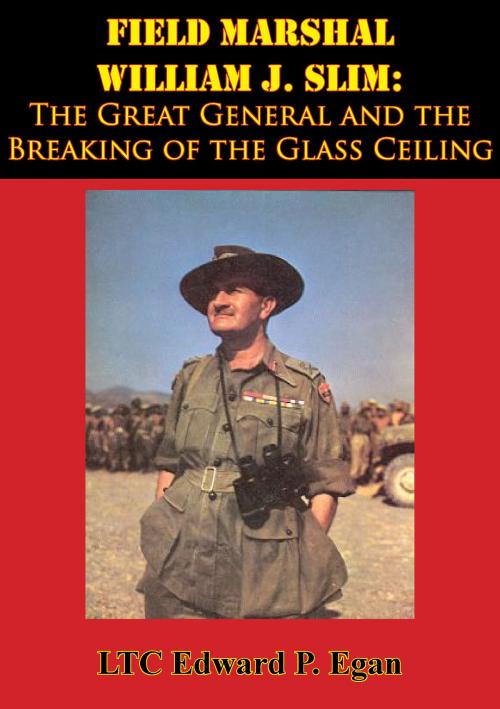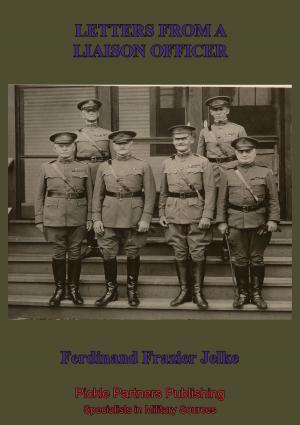Field Marshal William J. Slim: The Great General and the Breaking of the Glass Ceiling
Nonfiction, History, Germany, European General, Military, United States| Author: | LTC Edward P. Egan | ISBN: | 9781786253552 |
| Publisher: | Lucknow Books | Publication: | November 6, 2015 |
| Imprint: | Lucknow Books | Language: | English |
| Author: | LTC Edward P. Egan |
| ISBN: | 9781786253552 |
| Publisher: | Lucknow Books |
| Publication: | November 6, 2015 |
| Imprint: | Lucknow Books |
| Language: | English |
Field Marshal William J. Slim is considered by many historians to be one of the finest generals of World War II. His accomplishments were truly extraordinary. He commanded a polyglot army, consisting of six different nationalities speaking eight different languages, that fought in some of the most inhospitable, disease-ridden country in the world against the war’s toughest opponent, the Japanese. In March 1942, he assumed command of a British-Indian force in Burma half way through the longest retreat in the British Army’s history. Even though he was unable to reverse the disaster, he kept his force intact and led it to safety. Over the next three and one half years, despite very limited resources and several inept senior commanders, he rebuilt his force into an army that was able to inflict on the Japanese their greatest land defeat of World War II. In the process, he conducted four of the most classic operational campaigns of the war—the battle of the Second Arakan; the battles of Kohima and Imphal; the capture of Mandalay and Meiktila; and the pursuit to Rangoon. Throughout his career, but especially during World War II, Slim met all the criteria for a great general and strategic leader as set forth in Lord Wavell’s Generals and Generalship. Despite these great accomplishments, Slim ran into several “glass ceilings” during World War II. Twice he was relieved of command, once immediately after his greatest battlefield victory. This study examines Field Marshal Slim’s leadership. It takes a brief look at his biography, then compares him against Wavell’s standards for generalship by highlighting events from his career that illustrate each standard. Finally, it addresses the issue of the “glass ceiling”—what it is, the events surrounding Slim’s encounters with it, and how Slim was able to overcome it. The intent is to show that Slim was not only a great World War II general, but is still a model of leadership worthy of study by the U.S. Army.
Field Marshal William J. Slim is considered by many historians to be one of the finest generals of World War II. His accomplishments were truly extraordinary. He commanded a polyglot army, consisting of six different nationalities speaking eight different languages, that fought in some of the most inhospitable, disease-ridden country in the world against the war’s toughest opponent, the Japanese. In March 1942, he assumed command of a British-Indian force in Burma half way through the longest retreat in the British Army’s history. Even though he was unable to reverse the disaster, he kept his force intact and led it to safety. Over the next three and one half years, despite very limited resources and several inept senior commanders, he rebuilt his force into an army that was able to inflict on the Japanese their greatest land defeat of World War II. In the process, he conducted four of the most classic operational campaigns of the war—the battle of the Second Arakan; the battles of Kohima and Imphal; the capture of Mandalay and Meiktila; and the pursuit to Rangoon. Throughout his career, but especially during World War II, Slim met all the criteria for a great general and strategic leader as set forth in Lord Wavell’s Generals and Generalship. Despite these great accomplishments, Slim ran into several “glass ceilings” during World War II. Twice he was relieved of command, once immediately after his greatest battlefield victory. This study examines Field Marshal Slim’s leadership. It takes a brief look at his biography, then compares him against Wavell’s standards for generalship by highlighting events from his career that illustrate each standard. Finally, it addresses the issue of the “glass ceiling”—what it is, the events surrounding Slim’s encounters with it, and how Slim was able to overcome it. The intent is to show that Slim was not only a great World War II general, but is still a model of leadership worthy of study by the U.S. Army.


![Cover of the book Tragedy At Honda [Illustrated Edition] by LTC Edward P. Egan](https://www.kuoky.com/images/2015/november/300x300/9781786255440-qRl4_300x.jpg)


![Cover of the book A War Nurse’s Diary; Sketches From A Belgian Field Hospital [Illustrated Edition] by LTC Edward P. Egan](https://www.kuoky.com/images/2014/june/300x300/9781782891635-QpIG_300x.jpg)






![Cover of the book The Mediterranean And Middle East: Volume II The Germans Come To The Help Of Their Ally (1941) [Illustrated Edition] by LTC Edward P. Egan](https://www.kuoky.com/images/2014/august/300x300/9781782896227-i80K_300x.jpg)
![Cover of the book Gallipoli [Illustrated Edition] by LTC Edward P. Egan](https://www.kuoky.com/images/2012/april/300x300/9781782890966-owHm_300x.jpg)

